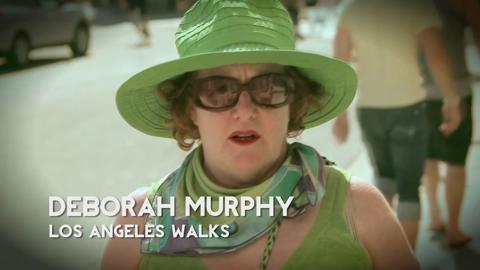October 2010 - The First CicLAvia Car-Free Event Takes Place On L.A.'s Streets

Los Angeles' longtime reputation as an automobile-obsessed metropolis was likely changed on the auspicious date of October 10, 2010 - 10/10/10, at 10 a.m. -- when the first CicLAvia car-free event commenced on seven miles of L.A. streets from Boyle Heights to East Hollywood.
The streets were not closed for a race, nor for a parade or festival. In fact they were not closed at all, but rather open - to all human-powered forms of transportation: bicycles, in-line skates, scooters, wheelchairs, skateboards, strollers, pet walkers, and pedestrians.
Los Angeles' CicLAvia was inspired by Bogota, Colombia's Ciclovia, where some 70 miles of city streets are designated for non-motorized transport every Sunday morning. A weekly tradition in Bogota since 1974, many Latin American cities have since adopted their versions of the Ciclovia.
Inspired by a trip to Bogota, cyclists Adonia Lugo and Bobby Gadda expressed a desire to bring a ciclovia to L.A. upon their return. In recent years, other American cities, such as San Francisco, Chicago and New York, have also embarked on their own ciclovia, or "open streets" events. While sharing their vision to the local bicycling advocacy community, they met various allies along the way and "CicLAvia," a play on the word "ciclovia" with the letters "LA" inserted into it, was formed as an organization. Over the next several months meeting with Mayor Antonio Villaraigosa's office, L.A. City departments, and Metro, and raising funds, CicLAvia became a reality.
At the first CicLAvia in 2010, nobody knew what to expect on that hot, sunny Sunday. The uninitiated expected a bicycle race. Some participants assumed there would be a group ride. But aside from booths, food trucks and activity "hubs" in various locations, there was nothing planned, and that was the intent. What did happen were tens of thousands of Angelenos enjoying, perhaps for the first time, streets devoid of the noise and dangers of motor vehicles. Participants witnessed the sights and details of their city that cannot be experienced from a car. And along the route were tens of thousands of smiling faces, of all ages, of all backgrounds, of all colors.
To date, there have been nine iterations of CicLAvia, each of them garnering over 150-200,000 participants -- the largest open streets event in the United States. As it was inspired by Bogota's Ciclovia, L.A.'s CicLAvia has been the model and inspiration for other car-free events, such as San Diego's CicloSDias, and Santa Barbara's SB Open Streets.
Each CicLAvia has repeated much of the same happy and positive scenes played out in its October 2010 debut. Routes have been modified and added over the years, reaching communities such as Chinatown, South Los Angeles, and Venice Beach. Current Mayor Eric Garcetti has promised to eventually host one CicLAvia event each month, reaching even more communities.
The next CicLAvia is scheduled for October 5, radiating to Chinatown, Echo Park, and East Los Angeles from downtown L.A.
The KCET program, "City Walk" highlighted L.A.'s CicLAvia in this episode:



